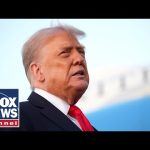Russia has recently made headlines with a dangerous new attack on Ukraine, using around 5,000 drones and a multitude of missiles to target civilians in the capital city, Kyiv. This onslaught comes on the heels of a significant meeting between President Trump and Ukrainian President Zelensky at the United Nations General Assembly in New York City. In this meeting, Trump hinted at a willingness to provide more military support to Ukraine, specifically missiles, after a period of military restrictions. It seems as if the landscape of support for Ukraine is shifting, and many are left pondering the implications of such actions.
Historically, President Trump has aimed to be a peacemaker, with an initial focus on bringing an end to the ongoing conflict between Russia and Ukraine. He has often expressed his dislike for war and the resulting loss of young lives, which he viewed as a direct consequence of the current fighting. It appears that the recent escalation from Russia might have reignited Trump’s resolve to aid Ukraine militarily while still maintaining his long-term desire for peace. As pressure mounts on Putin due to the relentless warfare, it could very well be that Trump is employing this military support as a strategic way to get Russia back to the negotiating table.
Insights from military experts, such as Jim Hanson, suggest that while Trump’s support for Ukraine may not equate to acquiring all of its lost territories, it serves a different purpose. Providing missiles and permission for Ukraine to hit Russian supply lines is about applying pressure on Putin — nudging him to come back and negotiate for peace. The dynamics of power and military strategy play a central role in this scenario, reinforcing the idea that sometimes a show of strength can lead to a resolution.
Trump also took a moment to criticize global actors like China and India, who he claims are fueling Russia’s war by purchasing its energy resources. This financial backing is a critical component of why the conflict persists, and he seems determined to rally European nations to reconsider their energy purchases from Russia. By highlighting these facts, Trump aims to increase economic pressure on Russia while supporting Ukraine’s efforts to defend itself.
Meanwhile, the political landscape is buzzing with discussions regarding military ethics and the state of the armed forces under recent leadership. Political commentator Pete Hegseth has called for a notable meeting focusing on “warrior ethos.” This initiative has sparked curiosity and speculation, with many keen to know the future direction of military policy. There are whispers that the discussion may cover the importance of maintaining a strong physical presence among service members and the impact of appearance on military effectiveness. After all, a well-groomed army is often seen as a powerful deterrent to adversaries.
In summary, the current situation illustrates a complex intersection of military support, global politics, and the drive for peace. As Ukraine faces intensifying attacks, the world watches closely to see how President Trump’s renewed military aid will affect the balance of power in the region. Whether this strategy will successfully push Putin toward negotiations remains to be seen, but one thing is clear: when it comes to global politics and warfare, the stakes couldn’t be higher. The need for strong leadership and strategic thinking is more essential than ever, and both sides of the conflict will have to navigate these treacherous waters with care.




